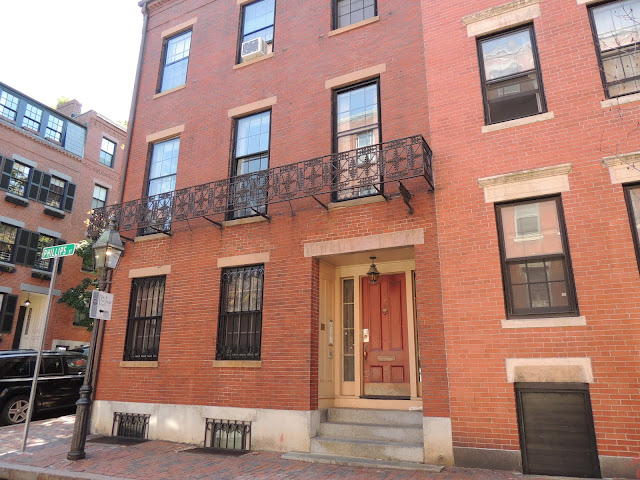August 18, 2016
Crispus Attucks was a black Revolutionary War hero who died at the Boston Massacre. He became the symbol of liberty for the black soldiers and slaves who fought to free this nation from Britain. Massachusetts was the first state to abolish slavery in 1783 when the State Supreme Court declared it "incompatible with the state constitution."
The Boston free blacks and the abolitionists congregated on the north slope of Beacon Hill. We walked the heritage trail and saw many of the houses once owned by these families.
The train dropped us at the Boston Commons; Across the Commons from the train stop is the base of Beacon Hill. Let me just say, yes, it is a hill, a big one.
Boston Black Heritage trail map. We started at the stairs in the above picture.
Robert Gould Shaw 54th Massachusetts Regiment Memorial
We missed it, but here's a picture.
Under pressure from the abolitionists, president Lincoln allowed African American soldiers into the Union army. The 54th Regiment was the first black regiment recruited in the north.
George Middleton House
Built in 1787, it's one of the oldest structures still standing on Beacon Hill. Middleton led one of three black militias that fought against the British. After the war he became an activist and community leader.
Louisa May Alcott's childhood home. Not part of the trail, but interesting, nonetheless. A short doorway for my shorter friends.
Narrow and steep streets are the norm for Beacon Hill
A parked repair truck left little room for passing traffic.
Phillips School Built in 1824, it was an all white school until 1855 when Massachusetts abolished segregated schools. In 1855 it became one of the first integrated Boston schools.
Another narrow steep street.
John J. Smith House Born free in Virginia, John came to Boston in the 1840s and opened a barbershop. It became the meeting place for the abolitionists and a rendezvous point along the underground railroad. During the Civil War, he was a recruiting officer for the all black 5th Cavalry and later was elected to the Massachusetts House of Representatives.
Well said, Beacon Hill Chocolates
Charles Street Meeting House. It was built in 1807 by the white Third Baptist Church of Boston. A church member and abolitionist, Timothy Gilbert, tested the segregationist seating in the mid 1830s by inviting black friends to join him in his pew, he was expelled. He and other white abolitionists founded the First Baptist Free Church which became Tremont Temple ---- Considered one the first integrated churches in America.
Keep one eye on the sidewalk, so you don't end up in a face plant.
Lewis and Harriet Hayden House Lewis was an escaped slave from Kentucky who settled in Boston. He was a leader in the abolitionist movement and the house was a stop on the underground railroad. The Haydens claimed to have kegs of gunpowder in their home that they threatened to ignite if slave catchers tried to enter.
John Coburn House John was a clothing retailer and activist. He was the treasurer of the New England Freedom Association that helped people escape slavery.
Not mentioned in the walking tour, so the photos of the plaques are all I have.
Abiel Smith School at Smith Court Abiel was a philanthropist who willed money to the city of Boston to educate African American children. The Smith School was the black public school until 1855 when all schools were integrated.
African Meeting House Built in 1806 by free black laborers, it is considered the oldest surviving black church building in the United States. It was acquired by the Museum of African American History in 1972.
These windows on the walls expose the original walls.
This vine/tree decided that a building would not stop it.
Smith Court Residences These 5 homes typify the residence of black Bostonians in the 1800s. Except for the Smith Court Houses, most wooden homes were torn down to make room for 4 or 5 story brick tenements in 1885 - 1915.





































No comments:
Post a Comment